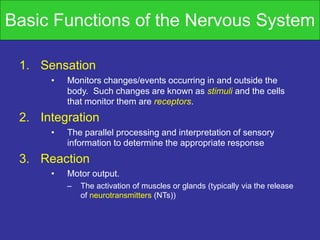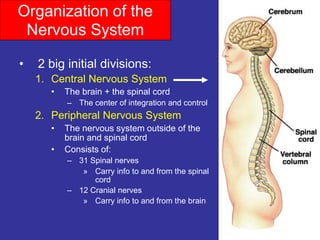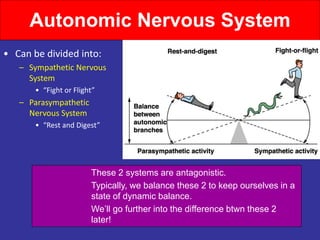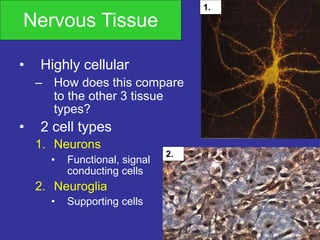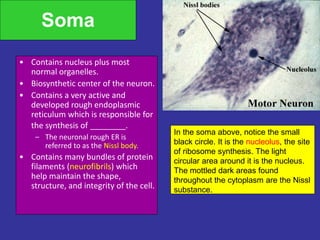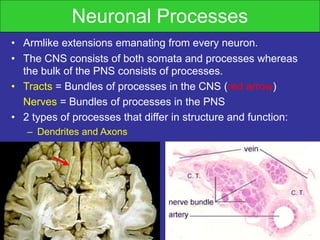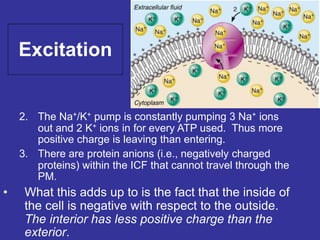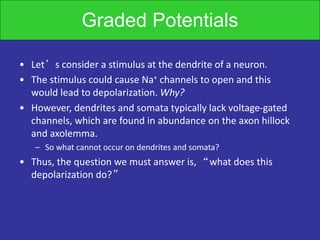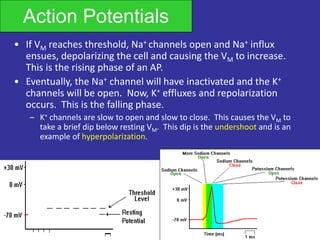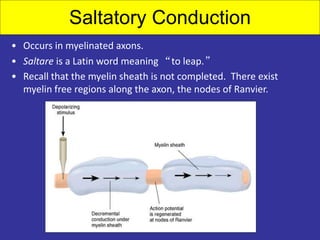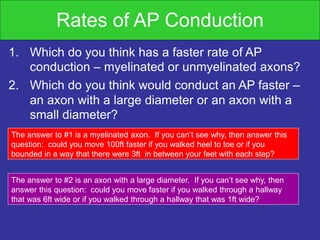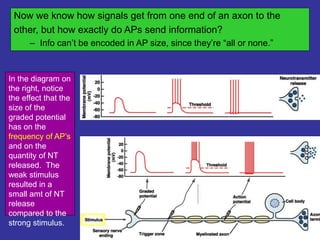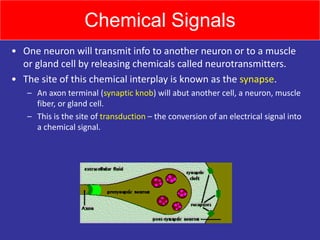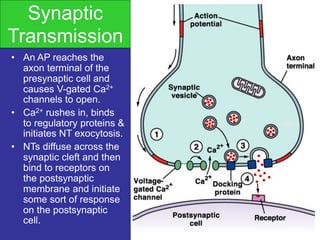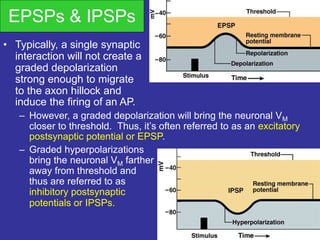The nervous system is a highly organized network of billions of nerve cells that functions as the control center of the body. It has two main divisions - the central nervous system comprising the brain and spinal cord, and the peripheral nervous system outside of these. Nerve cells called neurons are specialized to conduct electrical signals called action potentials that allow communication within the nervous system. Neurons have cell bodies and long processes called axons that transmit signals. They communicate with other neurons at junctions called synapses using chemical messenger molecules. The coordinated functions of sensation, integration and response enabled by this neuronal signaling allow the nervous system to monitor and control all bodily functions.

